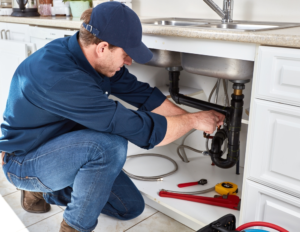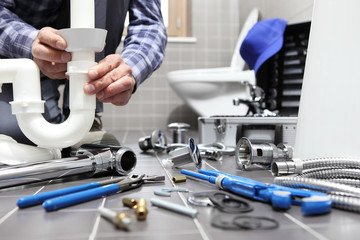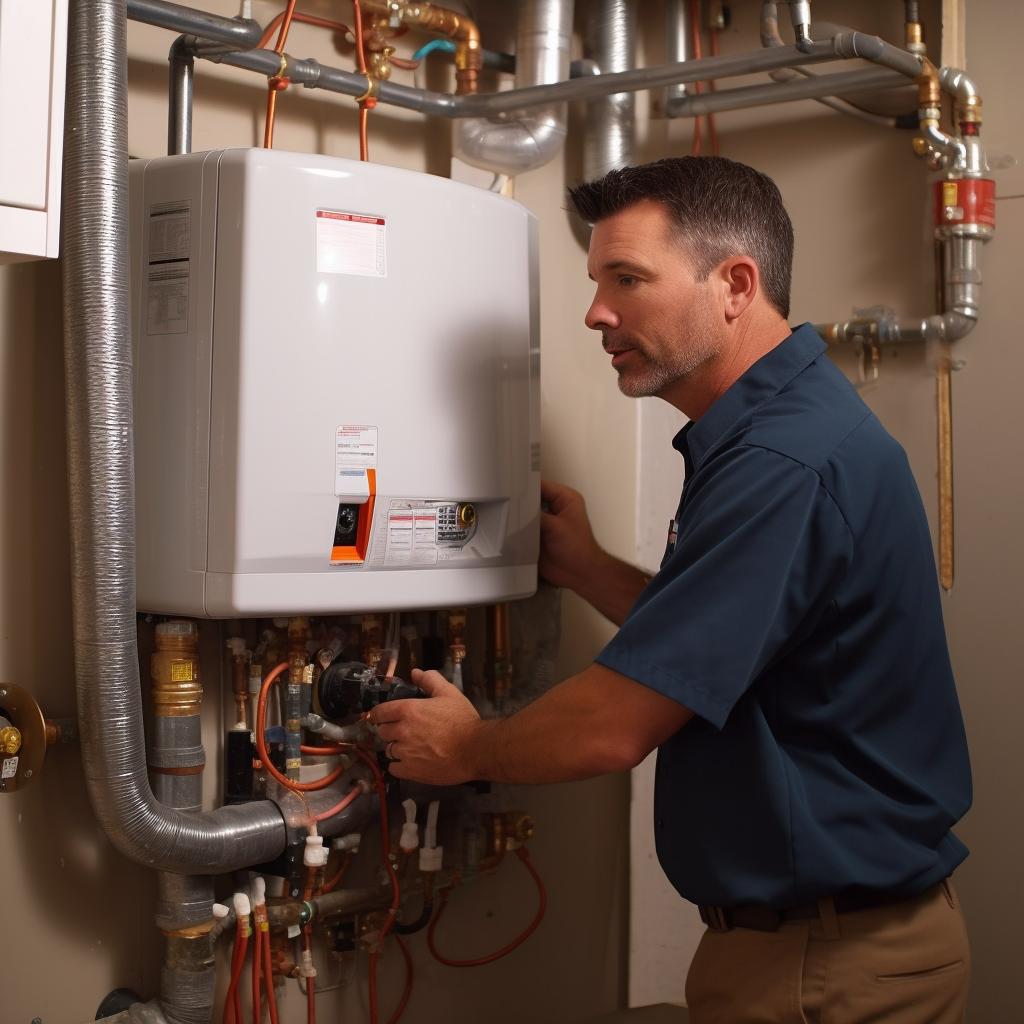Plumbing involves the distribution of potable water and removal of waste. It is an important division within construction, and understanding its functions can help builders and homeowners make better decisions about their needs.
As a service business owner, it’s important to stay up-to-date on industry trends and understand the impact of new technology on your plumbing business. This will help you grow your business and keep your clients happy! For more information, click the link https://www.plumbing-express.com/ to proceed.

History
Our modern plumbing systems are the result of thousands of years of innovation. We can trace its roots back to ancient civilizations, with each era building on the achievements of the previous. The earliest plumbing was rudimentary, with ancient people creating channels to transport water for agricultural purposes. The Egyptians took it to the next level, building complex irrigation systems for their crops and even installing bathrooms in their homes. The Romans were the true masters of plumbing, with their vast network of aqueducts providing clean water for citizens and removing waste.
Today, plumbing is all about bringing fresh, clean water into our homes and removing waste in the form of sewage. This process involves a series of pipes, basins, showers and toilets that work together to provide us with the water we need to survive. It also includes drainage, which removes excess water from our homes. This can be in the form of rainwater, or it can be the water that we flush down our toilets.
Some of the earliest plumbing innovations can be traced to the Indus Valley Civilization, with archeologists finding evidence of clay pipes. The Egyptians took it to the next stage, creating sophisticated water systems with copper pipes that allowed them to wash in privacy and bathe regularly. These systems were so advanced that they were even installed in the Pharaoh’s tombs, indicating a culture that placed great emphasis on hygiene and sanitation.
The 1800s saw further advancements, with the first public water works being built in Philadelphia and Chicago. Galvanized iron piping was commonplace until around 1960, when copper pipes became the standard. World War II restricted the use of iron and steel, forcing the industry to start using new materials like plastics. It was also during this time that showers were invented and that the concept of a drain trap was introduced.
Functions
Plumbing is the system of pipes and equipment that distributes drinking water, carries away waste, and provides heating and cooling in a building or home. It is not to be confused with sewage systems, which carry waste and other unwanted materials from a house or building into the local sewers. A good plumbing system is essential for any building, as it allows people to safely use water and remove waste without contaminating the environment or endangering human health.
The main function of a plumbing system is to provide clean, fresh drinking water to the users inside the building. This is achieved by bringing in clean drinking water through the main water supply line and installing water fixtures, such as faucets and toilets, that can produce and dispense freshwater. The waste water produced by these fixtures is then carried away by the drain lines, which are sloped to ensure that the used water and waste do not mix with the freshwater supply. The water main is also connected to a meter to record the water usage, and a shut-off valve is installed so that homeowners can control the amount of water they use.
Plumbers are also responsible for removing any contaminated water from the building. This may include sludge, liquid, and solid wastes. The sludge is then transported to the local sewage treatment plant for processing. Plumbers should be aware of the proper ways to dispose these materials so that they do not cause harm to humans and other living things.
Some plumbers also work on fire protection systems, which involves the installation of pipes and devices that are connected to the water supply and can be activated in case of a fire. This is a crucial aspect of any building, as it can protect inhabitants from dangerous chemicals and smoke inhalation.
Materials
There are many different types of materials that can be used to create plumbing pipes. The optimal choice depends on the specific application and project conditions. Some of the most commonly used materials include copper, CPVC, PVC, and PEX. These pipes are designed for various purposes, including drainage, sewage transport, water supply, and gas distribution.
Copper is one of the most popular and durable materials for plumbing. It is a strong, long-lasting material that is resistant to corrosion. It is also safe for potable water use. However, it is expensive and requires soldering and special fittings to install. Copper is also vulnerable to theft because of its high value.
Galvanized steel pipes are another durable option for plumbing. They are coated with zinc to prevent rusting and can last for years. However, they are more prone to cracking and corrosion than other types of pipes. Additionally, they are heavier than other materials, which increases the overall cost of the plumbing system.
Plastic piping is becoming more common in plumbing systems because it is cheaper than copper and less prone to corrosion. It is also easier to work with and can be bent into curves. The most popular type of plastic piping is polyvinyl chloride (PVC). It comes in rigid and flexible forms and can be used for a variety of purposes.
Another type of plastic piping is cross-linked polyethylene (PEX). This material is more flexible than PVC, which makes it ideal for drain lines. It can also withstand higher temperatures than other types of piping. However, it is important to choose the right type of PEX pipe for your plumbing needs. For example, you should look for a PEX pipe that has an NSF label. This indicates that it has been tested for lead content and other chemicals that could leach into drinking water.
Regulations
There are many plumbing regulations that must be followed in order to ensure that a building’s pipes and fixtures work correctly. Some of these requirements include sizing, piping materials and installation standards. In addition, professional plumbers must ensure that their work meets certain health and safety standards, including preventing backflow and minimising water waste.
The Uniform Plumbing Code (UPC) is a set of model codes developed by the International Association of Plumbing and Mechanical Officials (IAPMO). It is used as the basis for local ordinances in most areas of the United States. The UPC includes minimum requirements for water supply and distribution systems; drain, waste and venting piping; soil piping; plumbing fixtures; and appliances.
For example, a minimum slope of 1/4 inch per foot is required for drainage lines that discharge wastewater from water closets. This prevents the accumulation of solid materials in the drain line and allows for a slow release of wastewater into the sewer system or other disposal area.
In addition, sizing and capacity are important plumbing regulations that must be followed. For example, faucets and showerheads must be sized to match the maximum flow rate of each fixture. This will help to prevent overflowing and flooding.
The sizing of toilets and other sanitary fixtures is also important because it helps to minimise water waste. This can be done by installing low-flow fixtures and using the right size of pipe for each type of fixture.
In addition, the plumbing system must be designed and installed to withstand flood loads.
Installation
Plumbing is the network of pipes, fixtures, and appliances that distribute water and remove waste in residential and commercial settings. Plumbers install, repair, and maintain these systems to ensure that they function properly. They also inspect and test their work to ensure that it meets all applicable standards and codes.
The plumbing industry is regulated at the state and local levels, and plumbers must be licensed to work in it. Licensing requirements vary by state, but typically involve passing an exam and undergoing a background check. In addition to being licensed, plumbers must keep up with industry news and trends to stay relevant in their field. There are several ways to become a plumber, including through an apprenticeship or by attending a trade school.
Plumbers often work on new construction projects, and they must be familiar with the blueprints and building codes to correctly plan and execute plumbing installations. They may also be responsible for coordinating with architects and construction teams to ensure that plumbing systems integrate seamlessly into building projects.
The job of a plumber can be hazardous, as they often deal with dangerous materials such as chemicals and human waste. In addition, they may be exposed to a variety of health hazards, such as hepatitis, cholera, and polio. Plumbers should also be aware of the risks associated with working around asbestos and other harmful substances. They should also understand how to properly handle hazardous materials and dispose of them according to regulations.



